1lumen selects and reviews products personally. We may earn affiliate commissions through our links, which help support our testing.
Convoy S21F review
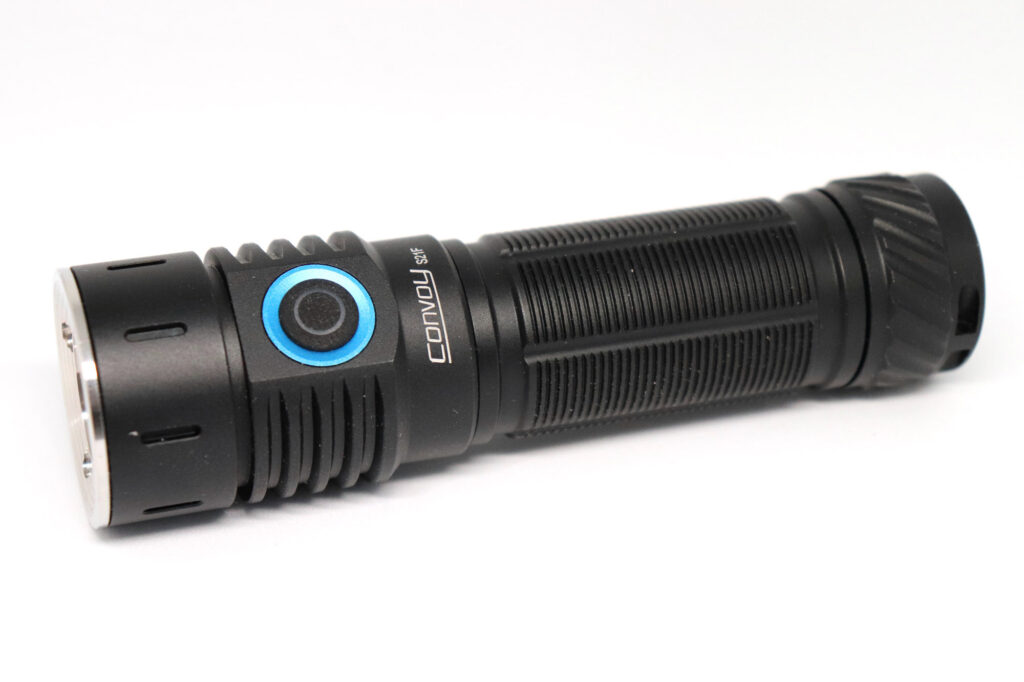
Convoy S21F specs
| Brand & Model | Convoy S21F |
|---|---|
| Flashlight category | Novelty walking / EDC flashlight |
| LED | 4 x Nichia 519A (2 x 2700k, 2 x 5700k) |
| Max. output | 2000 lumens |
| Max. beam distance | Not claimed by Convoy |
| Max. beam intensity | Not claimed by Convoy |
| Battery config. | 21700 |
| Onboard charging | Yes |
| Modes | Ramping + Moonlight & Turbo |
| Blinkies | N/A |
| Waterproof | IPX4 |
| Review publication date | April 2023 |
Review intro:
The S21 series of lights from Convoy are one of their newer ranges, catering for the 21700 Li-ion battery size. The ‘F’ version uses an electronic side switch with a quad LED setup using four 60 degree frosted TIR optics. However the most striking thing about the S21F is the two different tint LEDs it is equipped with.
Tint blending has been gaining popularity in the flashlight modding world over the past few years and some makers would even cater for custom orders of mixed LEDs, however the Convoy S21F is one of the first off the shelf offerings with multiple tint LEDs.
The rest of the spec looks good too, high output for a light of this size with the 519A emitters, on-board charging and a ramping user interface.
Package quality.
The S21F comes in the traditional Convoy plain box. The light is secure and well packed to be protected, but that is about it. No frills or branding on the packaging.
Included:
- Lanyard
- Molicel INR 4200mAh 21700 Li-ion battery
Any hoping for instructions will need to head to Convoys Aliexpress store for an online description of modes and specs.
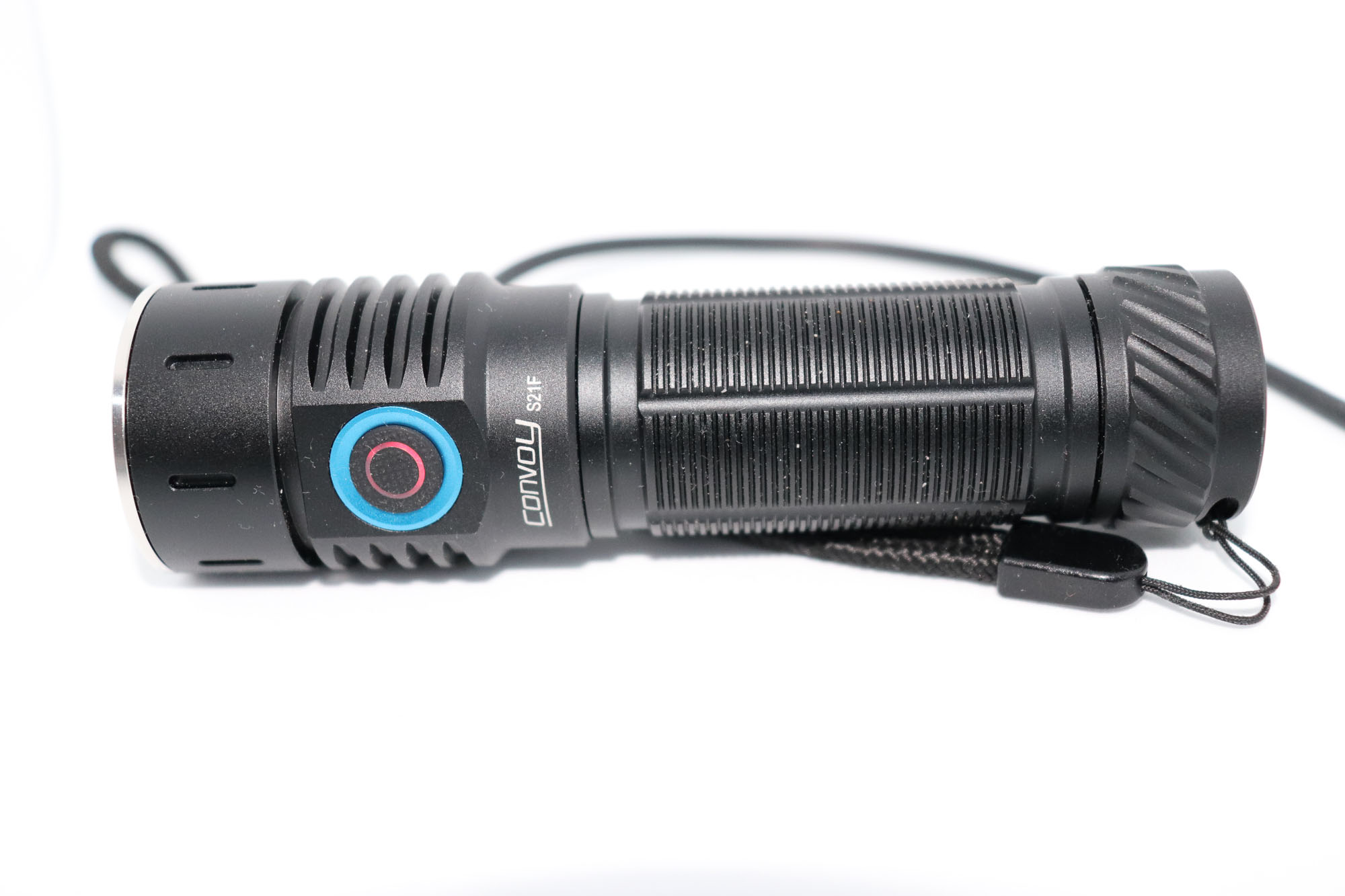
Flashlight in use
I’m finding it hard to place where you would use this light. Being a 21700 light, it is a bit fatter and heavier than most 18650 EDC lights. It also has a slightly larger head than a regular 21700 tube light. Making it more coat pocket sized than jeans pocket.
The lack of a proper pocket clip also makes it hard to see it as an EDC light. It does have a lanyard attachment point for the included wrist strap. Although personally I find these of little use unless I’m on a boat or leaning over something where I want the security of not losing the light should I drop it.
It is a very stable tail stander and the beam profile is very nice for even illumination. But it does lack some beam distance outside.
It is by no means a bad light, but feels like it is a light you’d used for a very specific purpose, I’m just completely lost on what the purpose may be.
Ultimately I suspect this light is for the diehard flashaholics and collectors who see the appeal of being able to mess about with the tint blending.
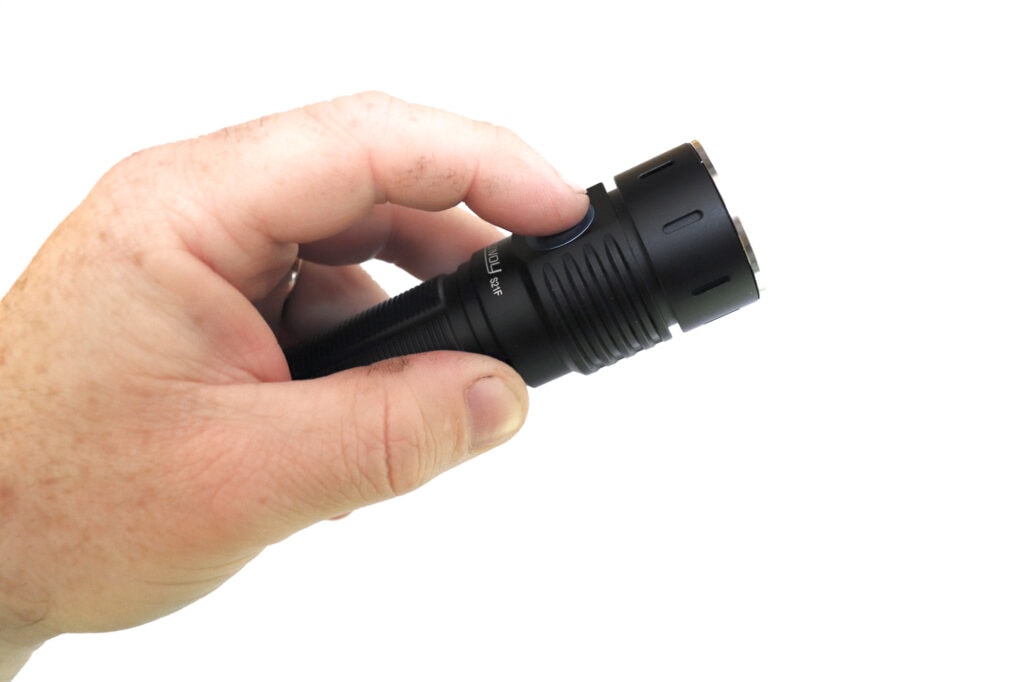
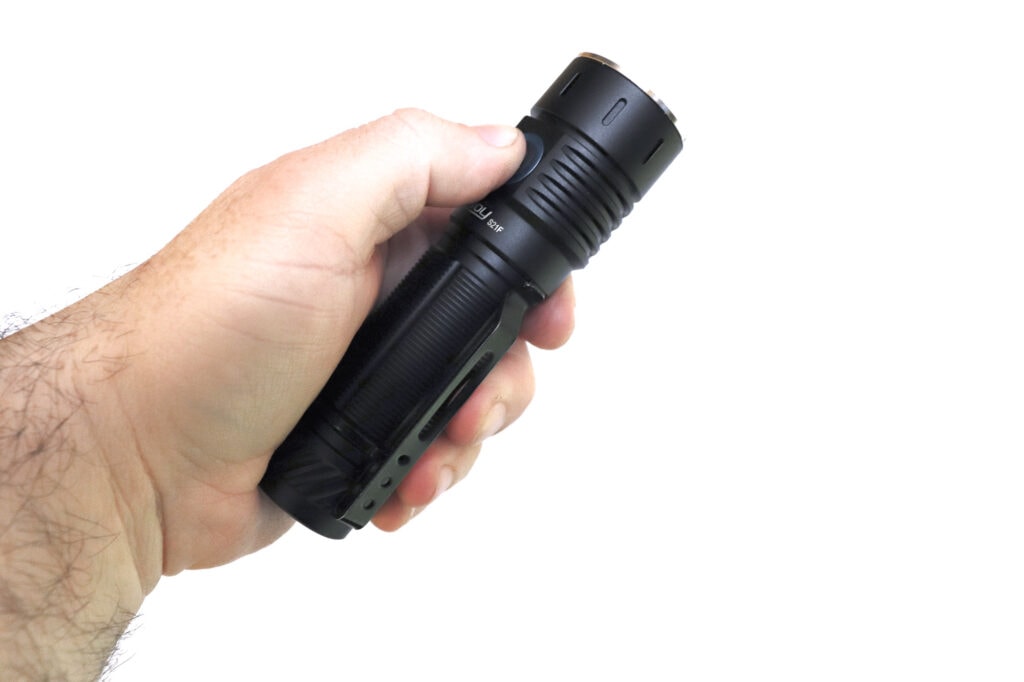
Build Quality and Warranty
General build quality is the usual high affair we expect from Convoy these days. Although I would personally question some of the design decisions:
- There is no proper recess for a pocket clip and while the standard Convoy clip on clip will fit, the fitment is poor and it will move about and fling off with relative ease. There is no way to attach the Convoy screw-on clip either.
- The rubber cover for the charging port is on the opposite side of the switch, in the dark it can be difficult to tell them apart and more than once have I found myself repeatedly stabbing the cover trying to turn the light on.
- The switch itself is quite heavy with a short travel and a heavily defined ‘click’. I guess this is done to help prevent accidental activation, as the switch sits slightly proud of the body. But it means multiple clicks require conviction and concentration. Using your finger instead of your thumb can be a challenge to double click in a timely fashion.
Aside from the above points, the physical light is solid and well put together. The square cut threads are nice and smooth and the knurling is nice and grippy while retaining being pleasant to the hand.
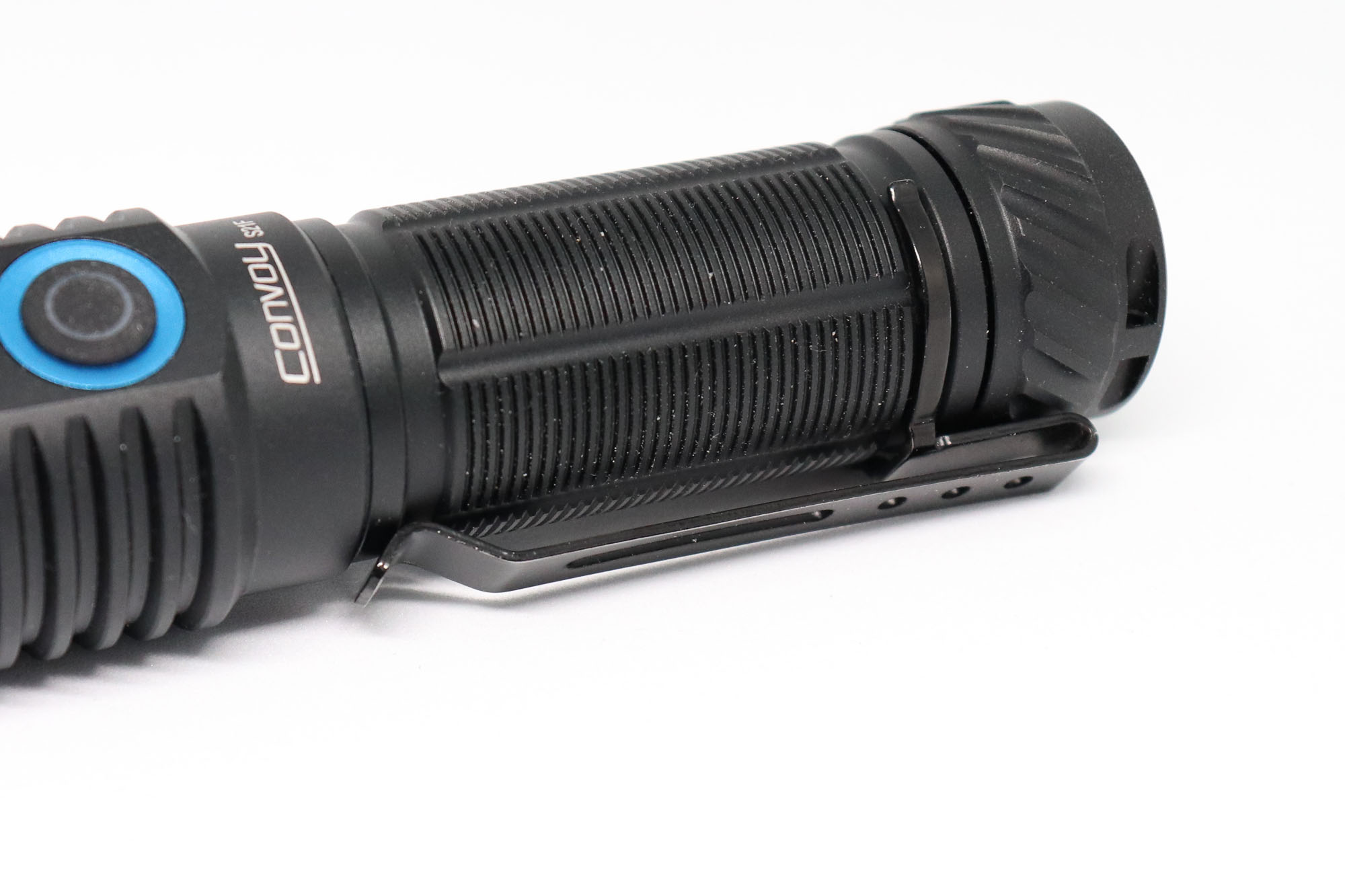
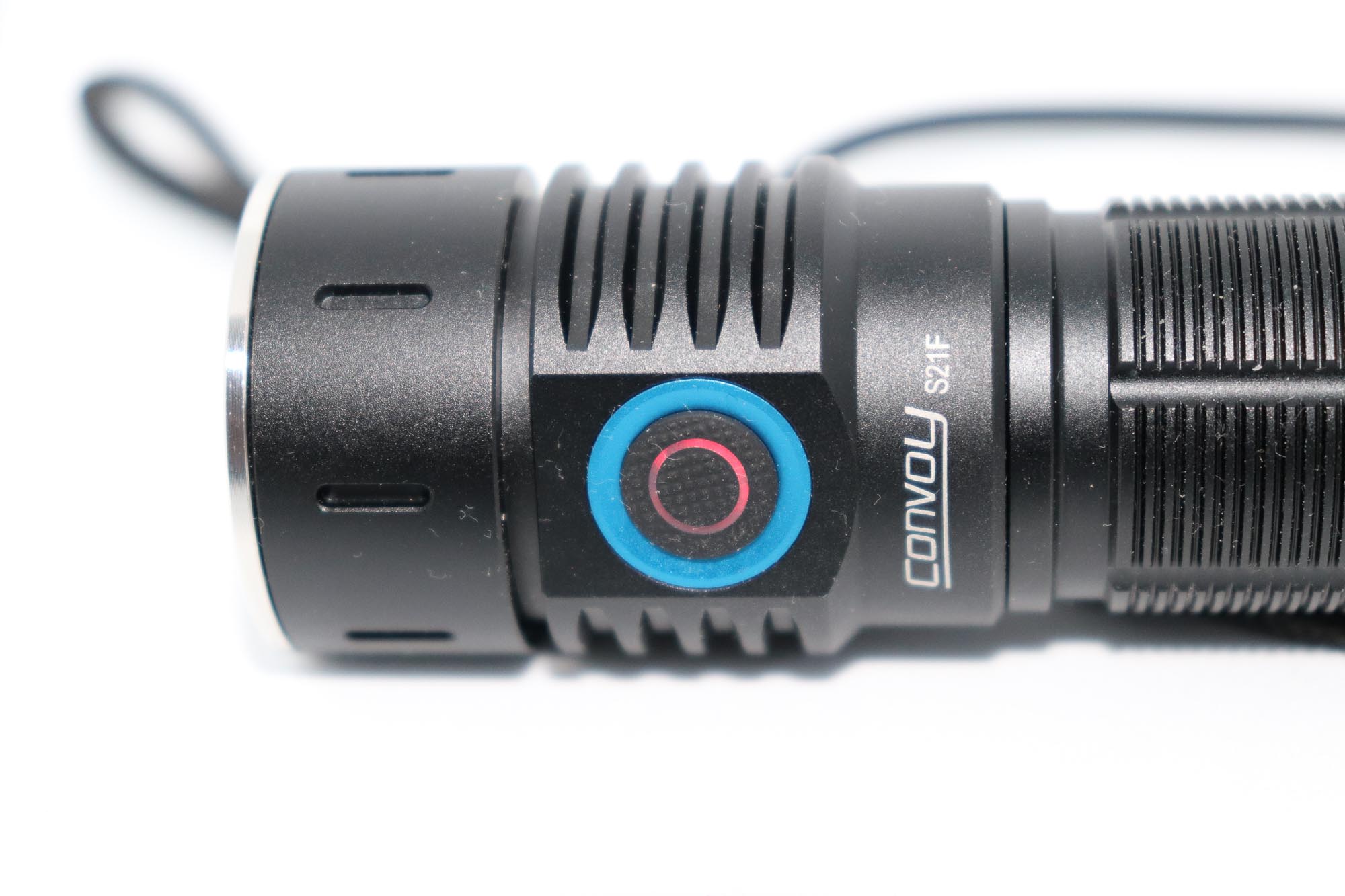
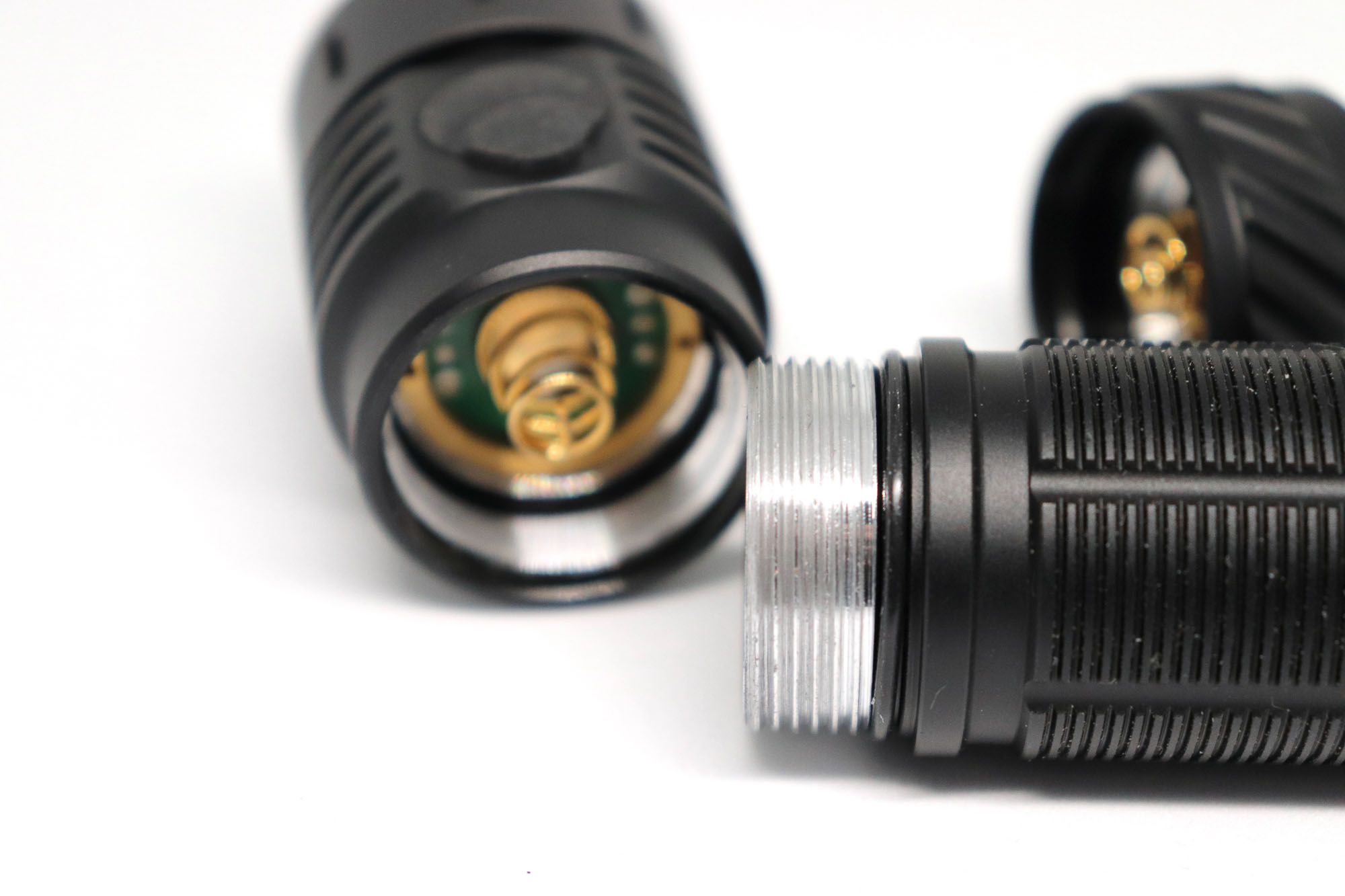
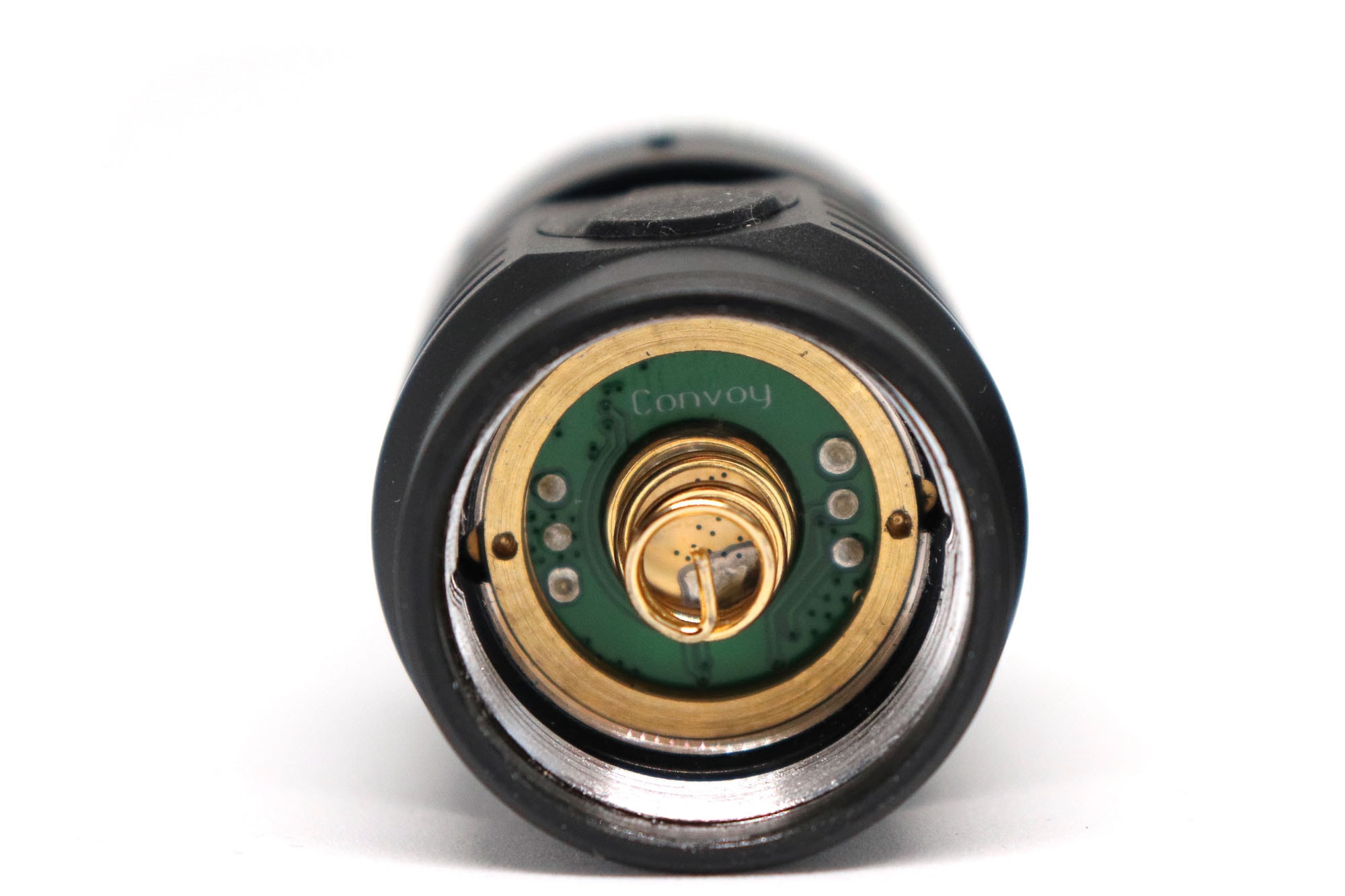
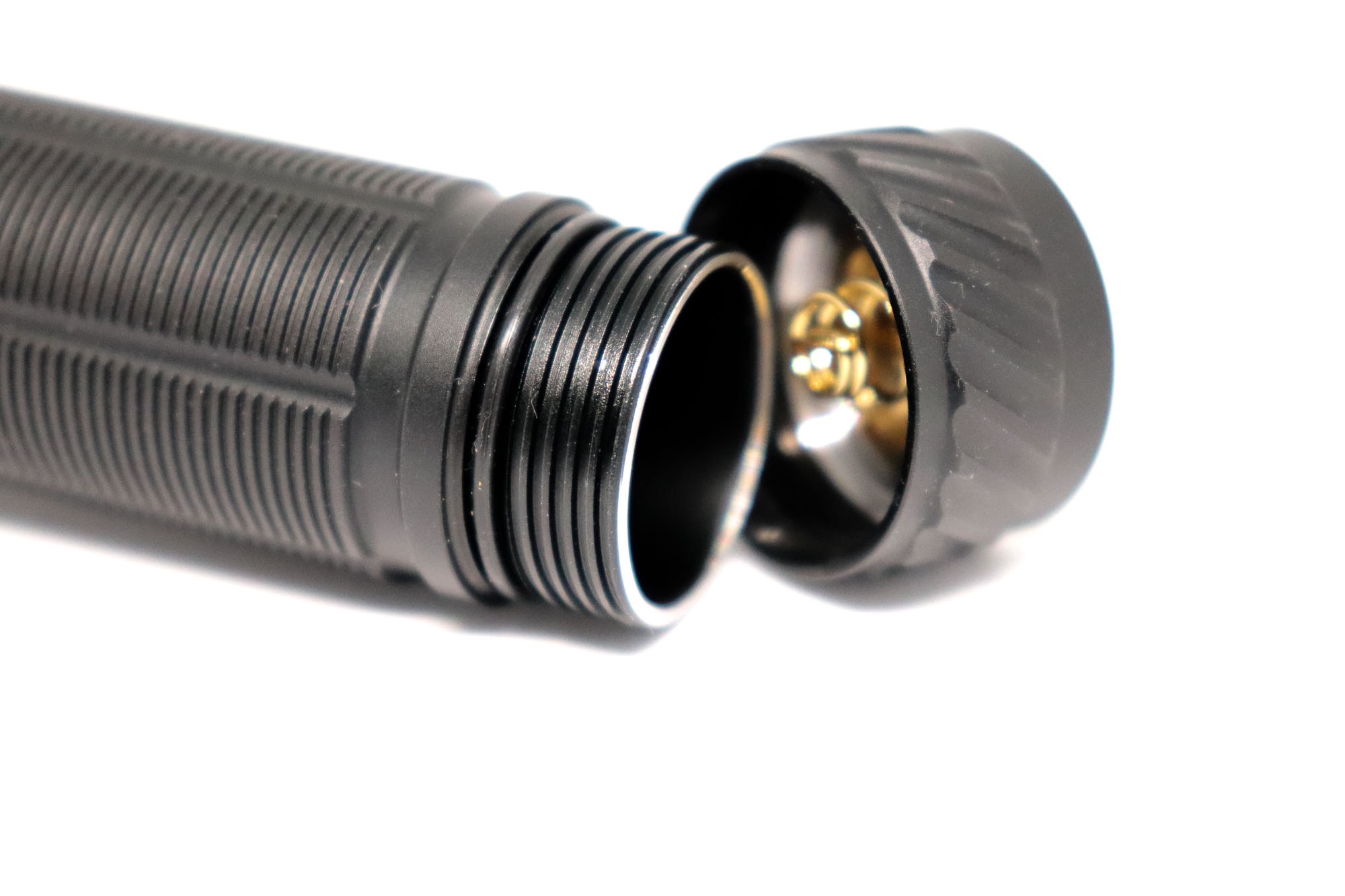
LED, Lens, Bezel, Beam, and Reflector
The Convoy S21F uses a quad 60 degree TIR optic, these are also frosted (akin to orange peel on a reflector). Although arguably unneeded, there is also a glass lens over the TIR optic too. The TIR optic is smaller than the head of the torch, so a large stainless bezel is fitted. To some this might look a little odd, but it works in practice. The bezel is smooth around the edge and will headstand with no issues.
The head also has some slots in it, to me these look very much like slots to fit some tritium vials in. Convoy does not seem to offer them as an option and I don’t have any spare to try at the moment, but it is quite a nice touch if you want to bling up your light.
The beam is very nice, smooth and even. In reality the entire beam is really one giant hotspot. This makes the beam ideal for close up use, reading or even illumination of objects. And if I’m being honest, when walking the beam is pleasant as you don’t get a small hot spot jiggling and jumping about in front of you that most reflector lights will normally suffer with. The trade off is a relative lack of beam distance unless you pump the lumen output up, although it will get hot quite quickly on Turbo.
However, the S21F’s real party piece is its tint blending. You really can drastically change the tint from one extreme to the other, although in actual use I’ve found somewhere in the middle to be more to my liking. Which has generally been around the 4000k mark. Compared to other 4000k lights, including Nichia’s own 519A in 4000k, the blended beam takes on a more rosy affair. Everything looks nice under this kind of light, but it somehow feels more artificial and less like a natural light.
Overall the tint blending does seem to be somewhat of a one horse novelty. Once you’ve played around with it for a bit and realised that if you actually wanted a warm white light or a cool white one, you’d simply have opted for that LED spec in the first place. Which kind of leaves you setting it in the middle. At which point, as nice as the light output is, you kind of think that just having some 4000-4500k emitters would be a whole heap simpler.
Also should you veer to either side of the middle blend, you’ll notice that both Moonlight and Turbo disregard your blend selection and use all 4 LEDs equally. Kind of missing the point of being able to select a tint blend in the first place.
Opple Light Meter readings (2.5m):
High output blended mode:
- 3819 CCT
- 97.4 CRI Ra
2700k blend:
- 2551 CCT
- 98.6 CRI Ra
5700k blend:
- 4937 CCT
- 98.3 CRI Ra
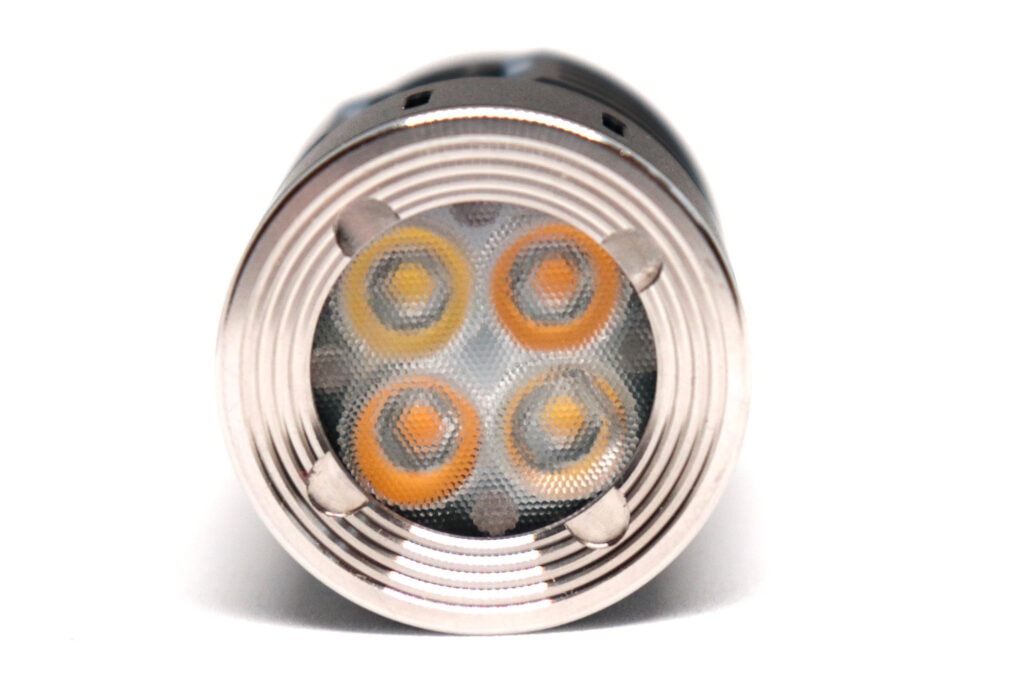
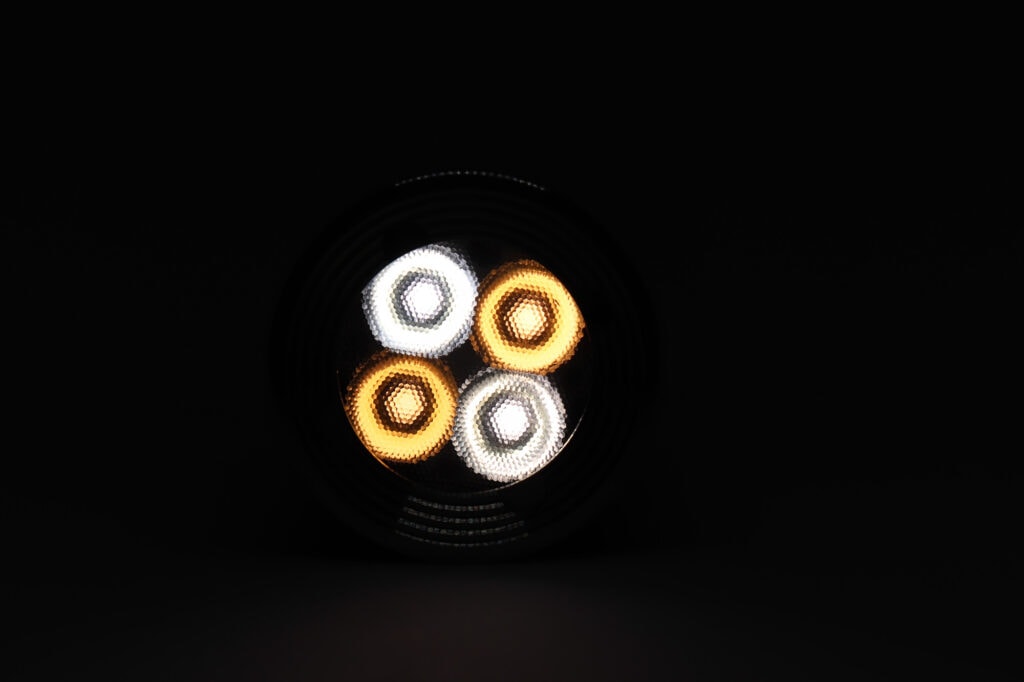
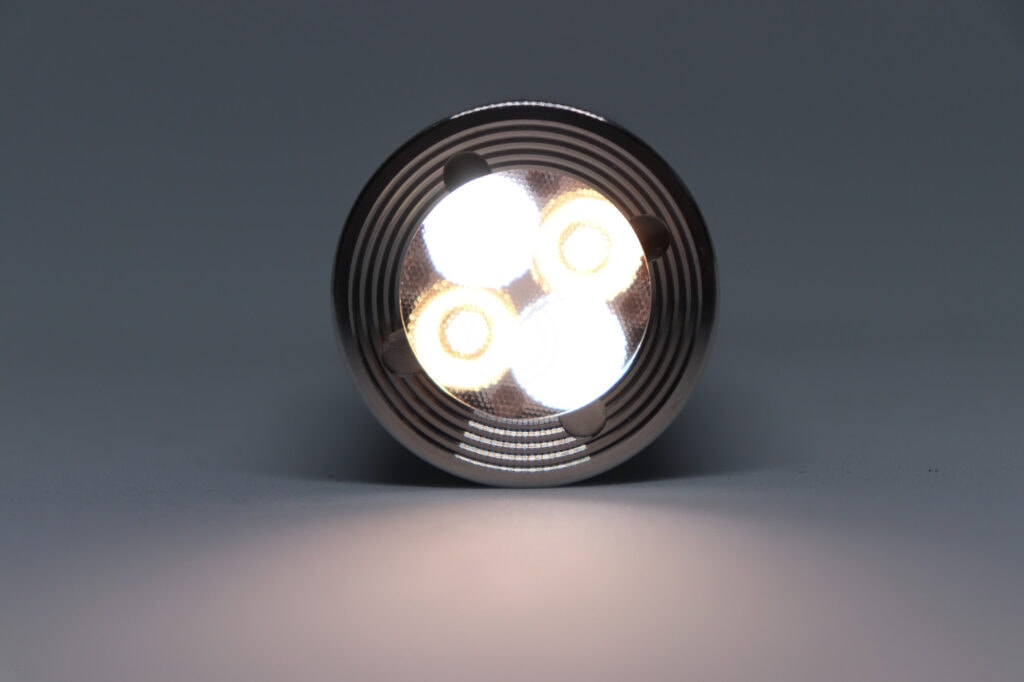
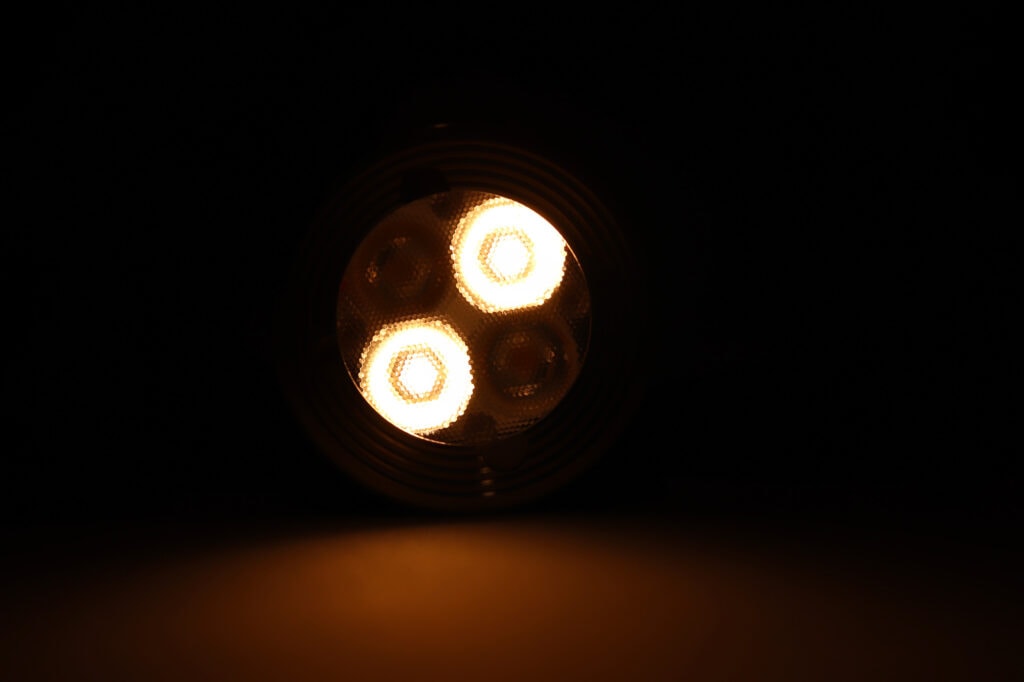
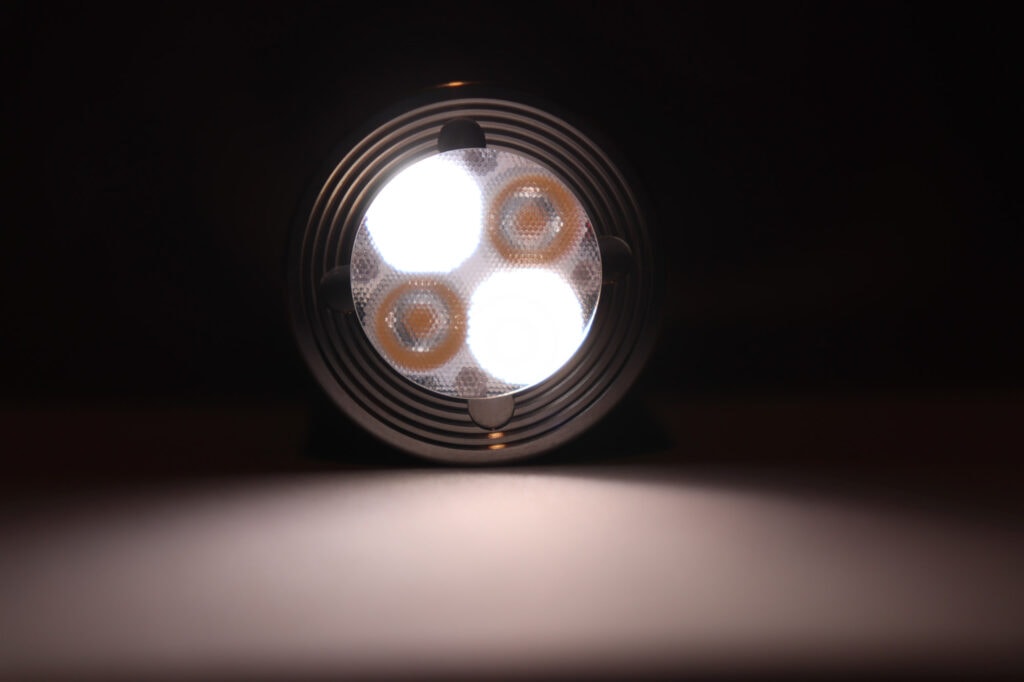
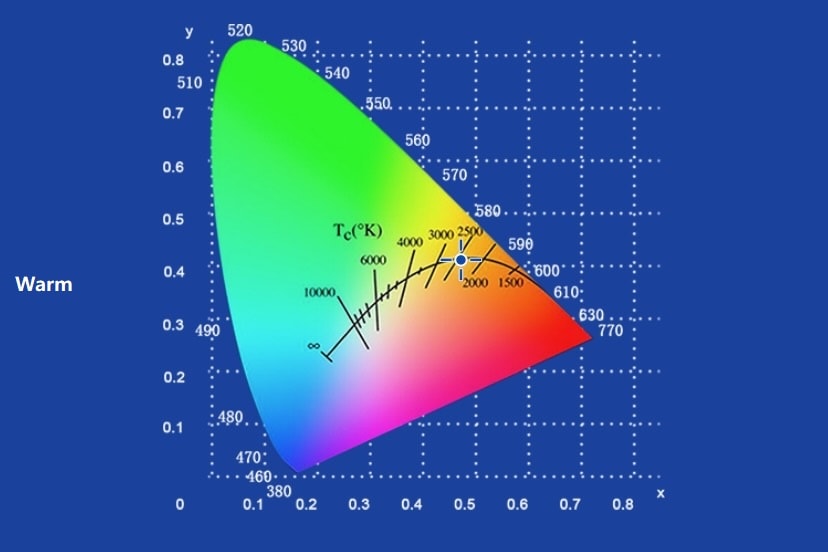
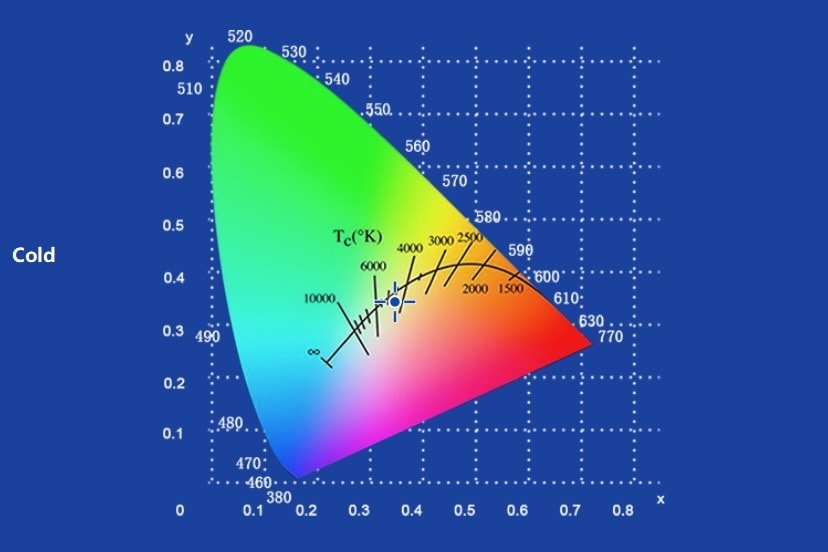
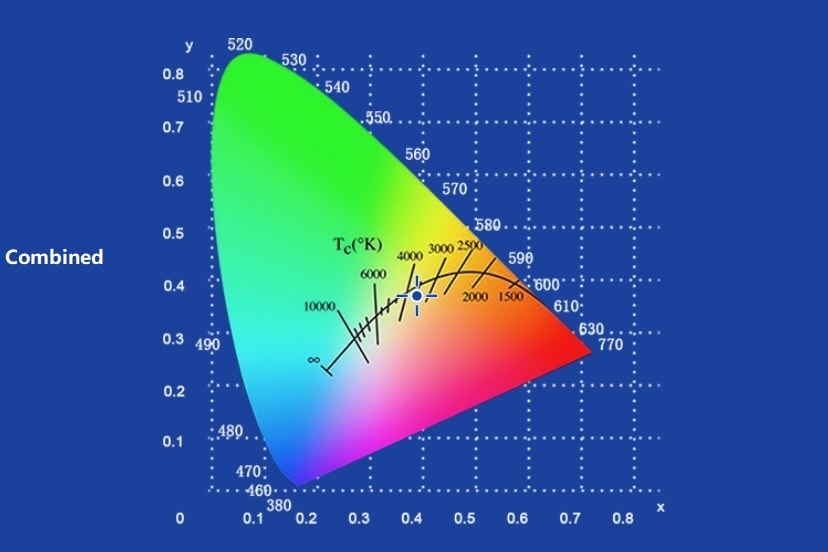
Dimensions and its competition
Dimensions:
| Convoy S21F | Millimeters | Inches |
|---|---|---|
| Length | 121mm | 4.76 in |
| Head diameter | 33.1mm | 1.30 in |
| Body diameter | 27.5mm | 1.08 in |
Dimensions are rounded to the nearest millimeter, and to the nearest tenth of an Inch.
Weight:
| Convoy S21F | Weight in grams | Weight in oz |
|---|---|---|
| Without battery: | 120.4g | 4.25 oz |
Weight is rounded to the nearest gram, and to the nearest tenth of an Oz.
Flashlight size comparison with its competition:
Group 1: Convoy S21F, Convoy S2+, Manker E14 II
Group 2: Convoy S21F, Noctigon DM11, KDLITKER E6 21700
Group 3: Convoy S21F, Manker E14 II
Group 4: Convoy S21F, Solarforce L2M
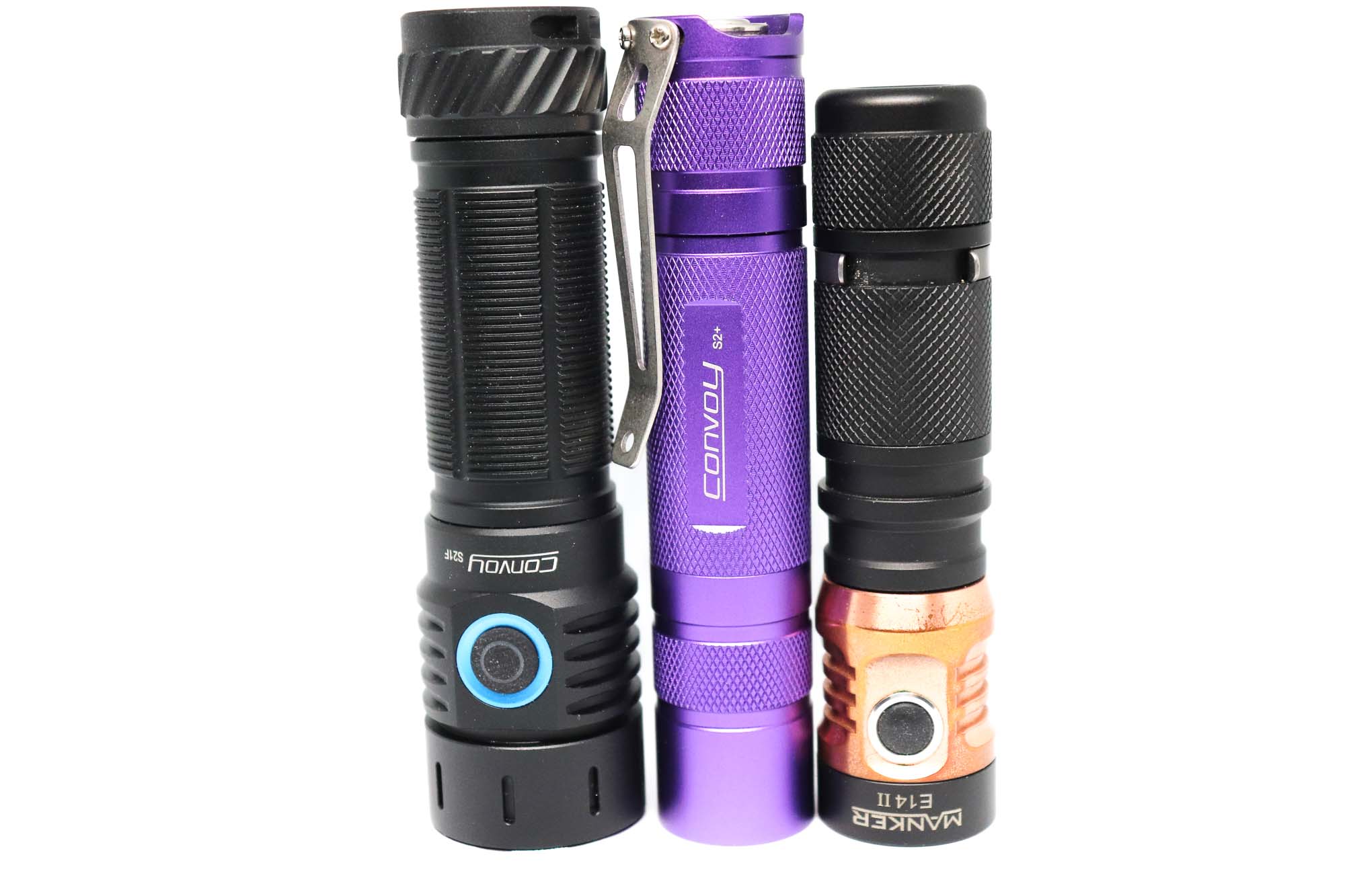
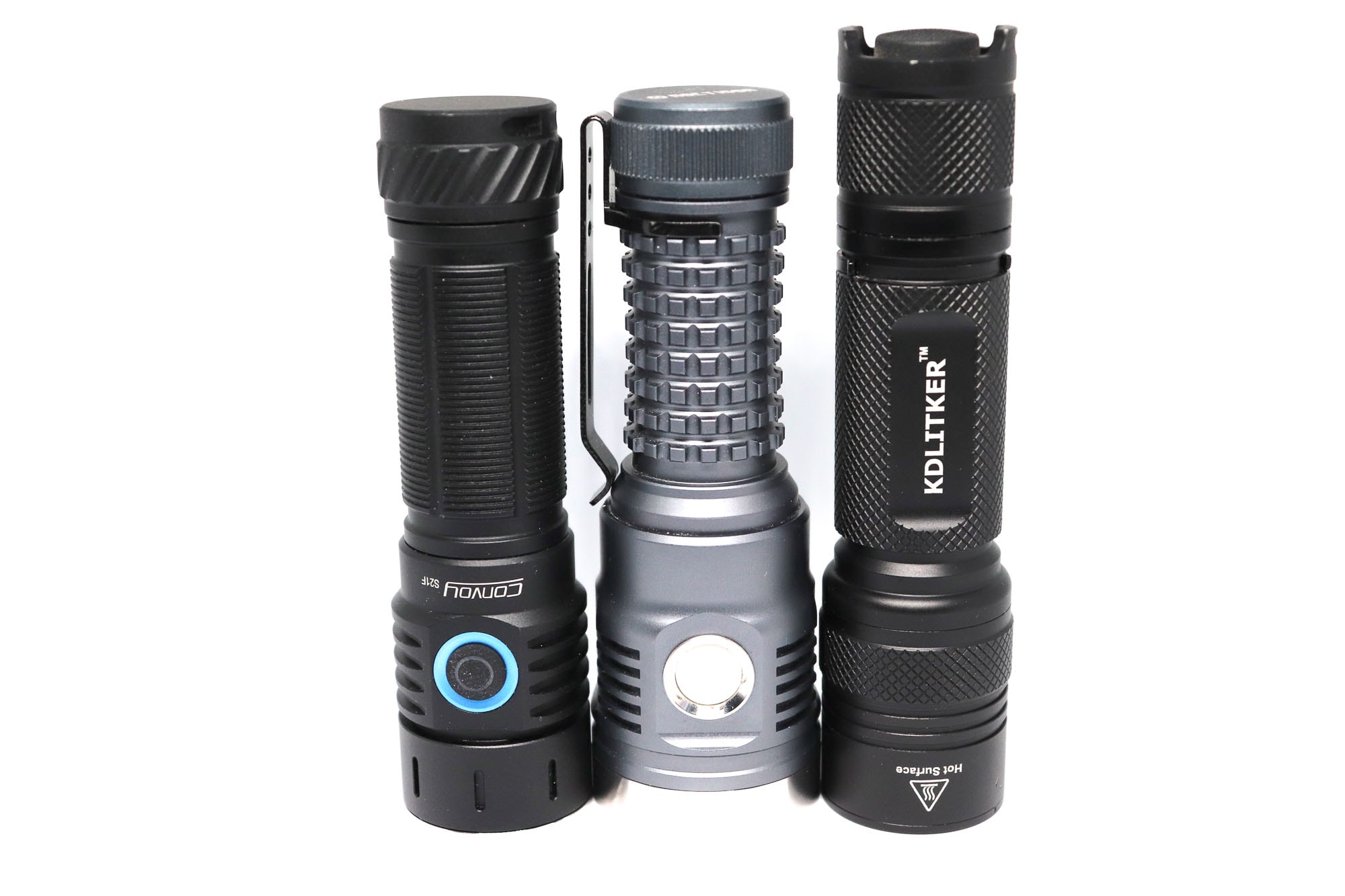
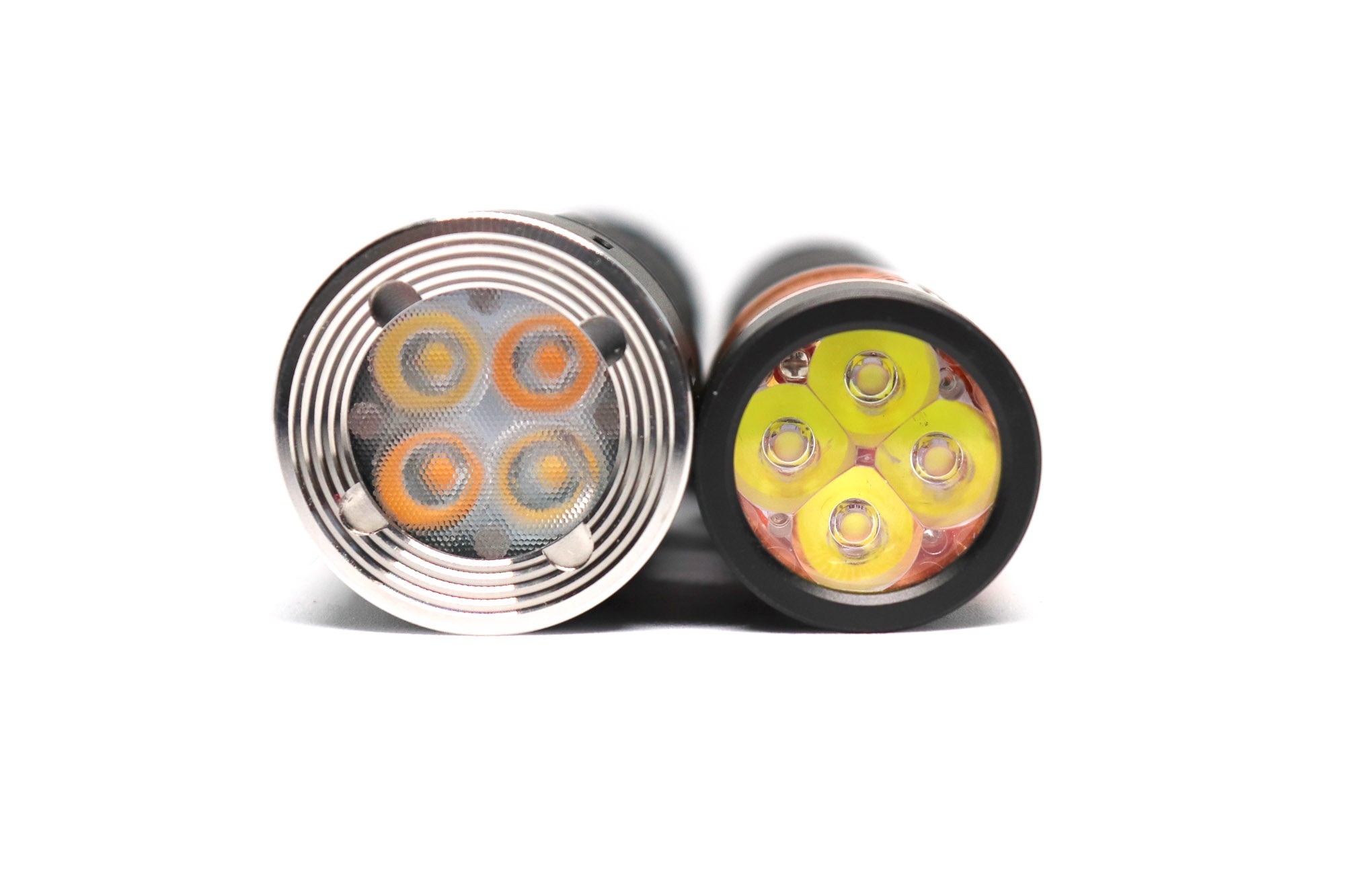
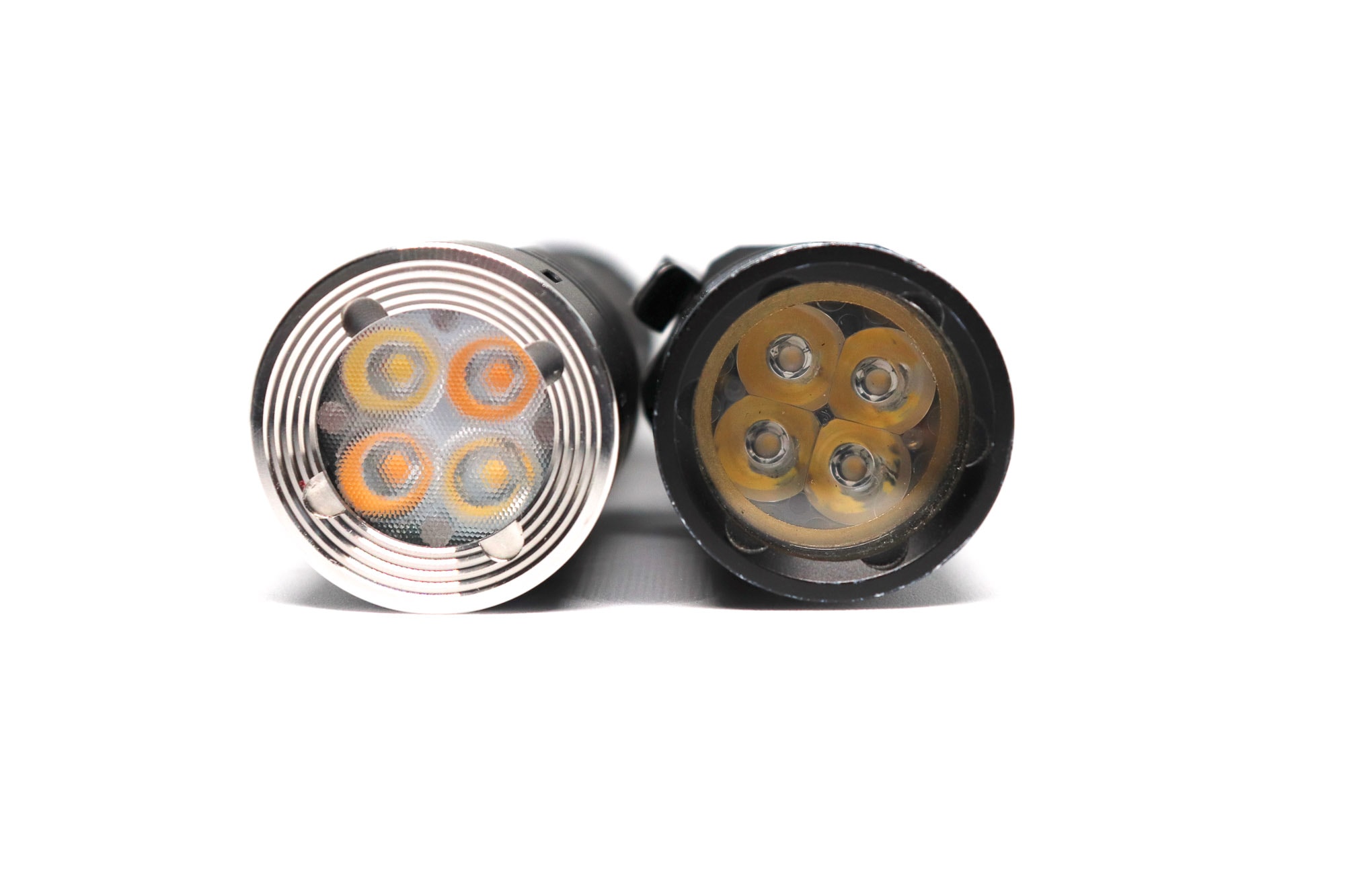
Convoy S21F UI: User Interface and Driver
Available modes:
- Smooth ramping or 4 stepped ramping, plus moonlight and turbo
Available blinky modes:
- Strobe/SOS
From OFF:
- 1 click: On
- Press and hold: Moonlight
- Single click: On (memory last main output used)
- Double click: Turbo
- 4 fast clicks: tactical mode, only 100%, click the button again 4 times to exit the tactical mode
- 5 fast clicks: battery voltage
- 6 fast clicks: mode change between stepless and 4 ramped outputs
- 10 fast clicks: lockout
From ON:
- Press and hold: To ramp up brightness (repeat to ramp down)
- Double click: Turbo
- 1 click: Off
- 1 click from Turbo: Previous output mode (or off if it was Moonlight)
- 2 clicks and hold: Tint blending (repeat to blend the other way)
Mode memory:
- Sadly it does
Shortcuts:
- To Low: Yes
- To Turbo: Yes
- To Strobe: No
Low voltage warning:
- Yes, but no voltage or behaviour claimed
Strobe/blinkies
- Hidden
Lock-out mode:
- Physical lockout via tailcap. Plus an electronic one if you are prepared to click the button 10 times to lock and 10 more times to unlock the light.
PWM
- None that I could detect
Additional/summary info on the UI:
The UI sounds a bit complex on paper, although it is easier to use than you’d think. But there are some issues. Firstly the Moonlight mode is not really all that low, it could do with being 80-90% lower.
Also when you access Moonlight you will find yourself trapped in this mode. If you want a little more light your only option is to turn it off and start over. Although oddly you can access Turbo from Moonlight.
Similarly, if you are in Turbo, there is no way to ramp it down, you have to turn it off or revert to your previous output.
There is also no way to get quickly to the High output, you will have to ramp up to it. The ramping also seems inconsistent, usually it feels sluggish. Although on occasion it has felt more snappy to respond, I’m unclear as to why it occasionally has behaved differently. Although it may just be perception depending on which way you are ramping and the output you start on.
The light will give a little flicker at the top and bottom of the ramp. Starting on the lowest setting it initially appears to ramp up quickly, but it’ll take nearly 9 seconds of holding the button down to reach the flicker at the top of the ramp and the same time going back down.
Another popular ramping user interface (Anduril) takes around 2 seconds in the default config to ramp from one end to the other. Which makes the Convoy feel sluggish and frustrating to use by comparison.
The slow ramping can also cause the user to accidentally enter the tint blending mode by mistake, as the button presses are quite similar. And it can be hard to visually see the output ramping for a couple of seconds in some cases.
I also do not like the fact that the Convoy UI has mode memory. As I just don’t know what output it will be in when I turn it on. I’m never going to remember what I used last and chances are it’ll be completely the wrong mode for what I want next. Although having said this, if you could activate the light in Moonlight and be able to access the ramping mode from there, it would solve this complaint. Likewise if you turn it on via accessing Turbo, and then were able to access the ramping from that mode too it would make the light vastly more usable in my opinion.
The UI is so close in many ways, but these large hurdles really put me off wanting to use the light.
In regards to the tint blending, the ramping works fine on this, as you probably don’t want it to change too quickly. Although there doesn’t seem to be a way to “reset” the blending. If you find a blend you like. There is no way to easily get back to it should you change it. Or if you set it to one extreme and just want it in the middle again, there appears to be no option other than pot luck. The blend you select is however remembered when the light is turned off or even if you remove the battery.
Convoy S21F Charging and batteries
The S21F has an inbuilt USB Type C port, claimed to be able charge at up to 2A. The port is covered by a rubber bung and is easy to access and use.
While charging the switch will illuminate red and turn green once charging completes. This makes it very easy to charge the included Molicel 27000 battery.
The Molicel battery is a flat top non protected battery, however the S21F uses springs at both terminals, so button tops or slightly longer batteries should be no problem for it.
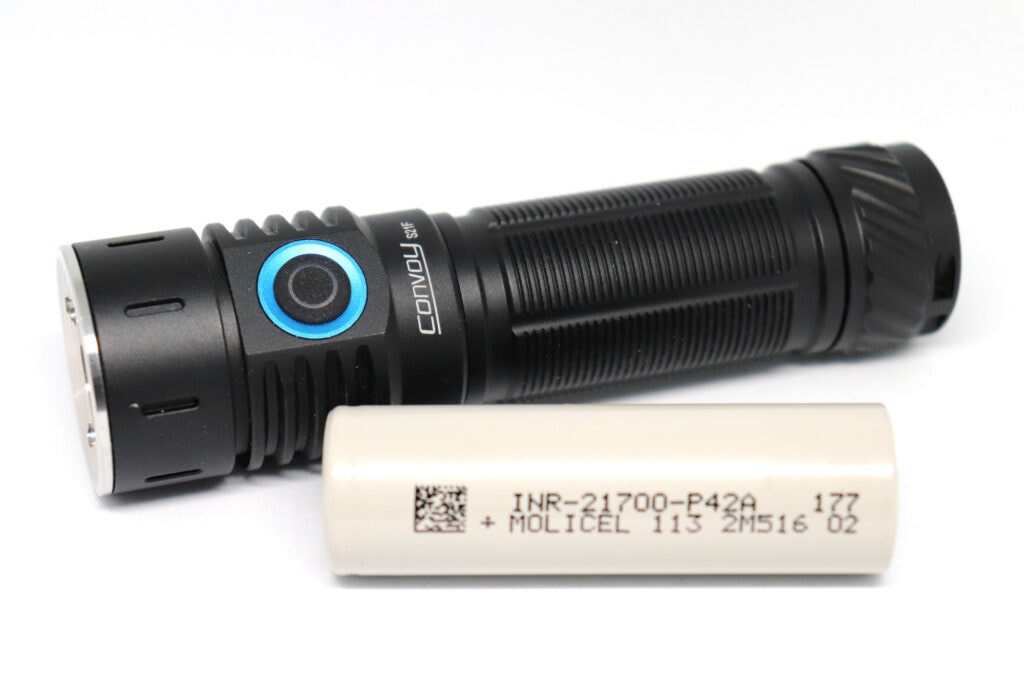
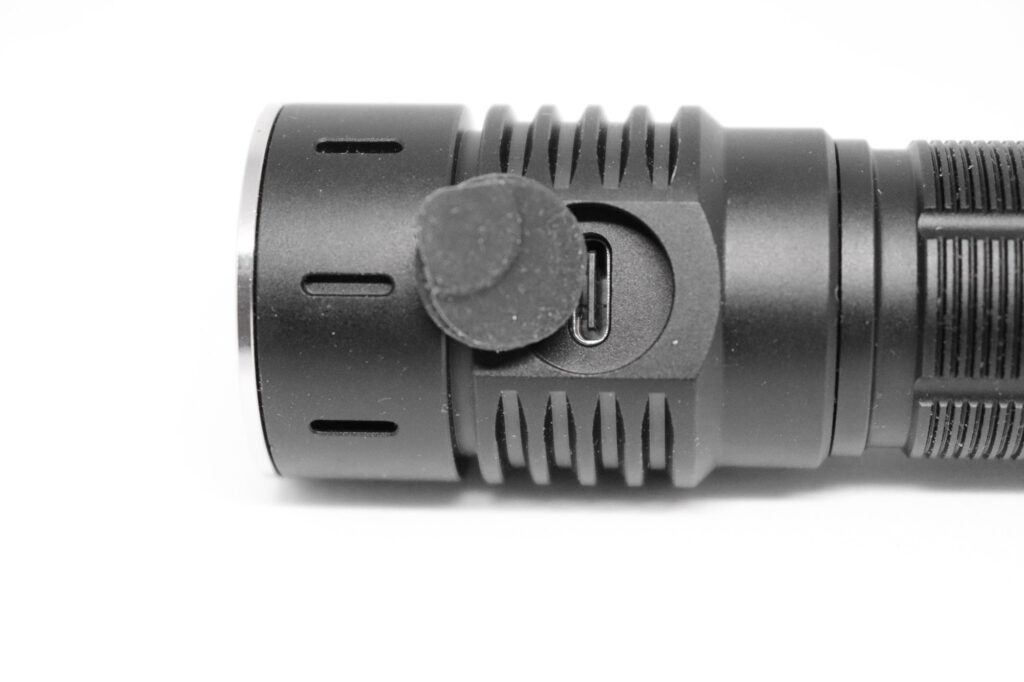
Performance test
All measurements are made with a homemade lightbox and the CeilingBounce app on an Android phone.
Testing the outputs of the S21F is a little complex, with the smooth ramping mode there is no way to be able to select the same percentage output. Therefore I have measured the Lowest and Highest ramp output values, along with Moonlight and Turbo.
In addition as there is also no way to determine the percentage mix of blending, I have measured using a blend I like, which is around 4000k. I also recorded outputs for either end of the blend spectrum, although Turbo always uses all four LEDs no matter the blend, while the ramping and High output can be limited to just two LEDs when ramped to one end of the tint spectrum or the other.
Lumen measurements (for each mode)
Blended output circa 4000k with all 4 LEDs:
| Mode | Amps at start | Specs | turn on | 30 sec | 10 minutes |
|---|---|---|---|---|---|
| Moon | 0.05 | – | 11 lm | 11 lm | 11 lm |
| Low | 0.08 | – | 20 lm | 21 lm | 21 lm |
| High | 4.95 | – | 922 lm | 914 lm | 537 lm |
| Turbo | 7.96 | 2000 lm | 1986 lm | 1819 lm | 517 lm |
2700k blend with only 2 LEDs:
| Mode | Amps at start | Specs | turn on | 30 sec | 10 minutes |
| Moon | – | – | 11 lm | 11 lm | 11 lm |
| Low | – | – | 18 lm | 18 lm | 18 lm |
| High | – | – | 1038 lm | 928 lm lm | – |
5700k blend with only 2 LEDs:
| Mode | Amps at start | Specs | turn on | 30 sec | 10 minutes |
| Moon | – | – | 11 lm | 11 lm | 11 lm |
| Low | – | – | 24 lm | 24 lm | 24 lm |
| High | – | – | 1363 lm | 1322 lm | – |
Parasitic drain:
- Yes, but too low for me to get a measurement.
Battery Life: Runtime graphs
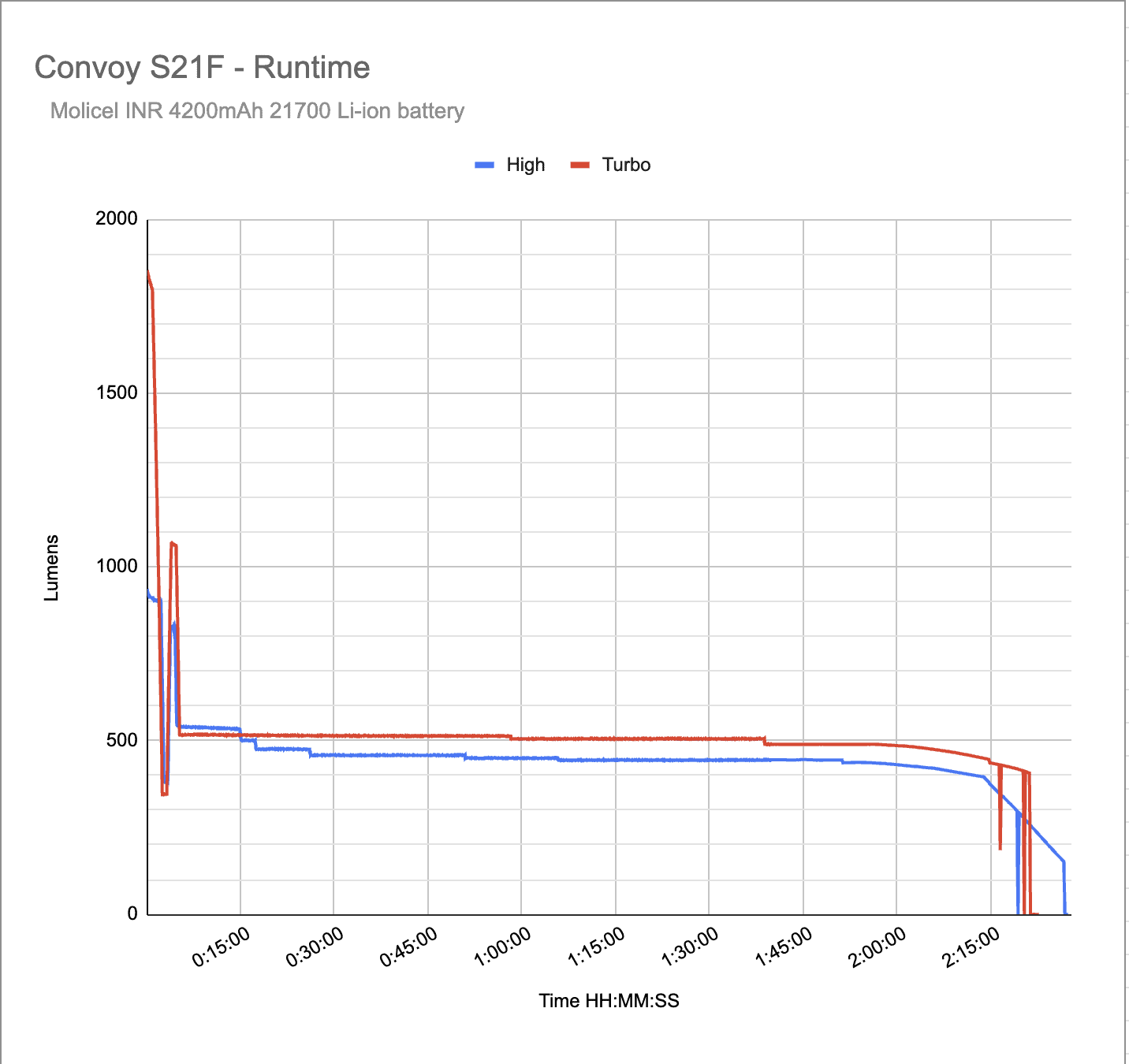
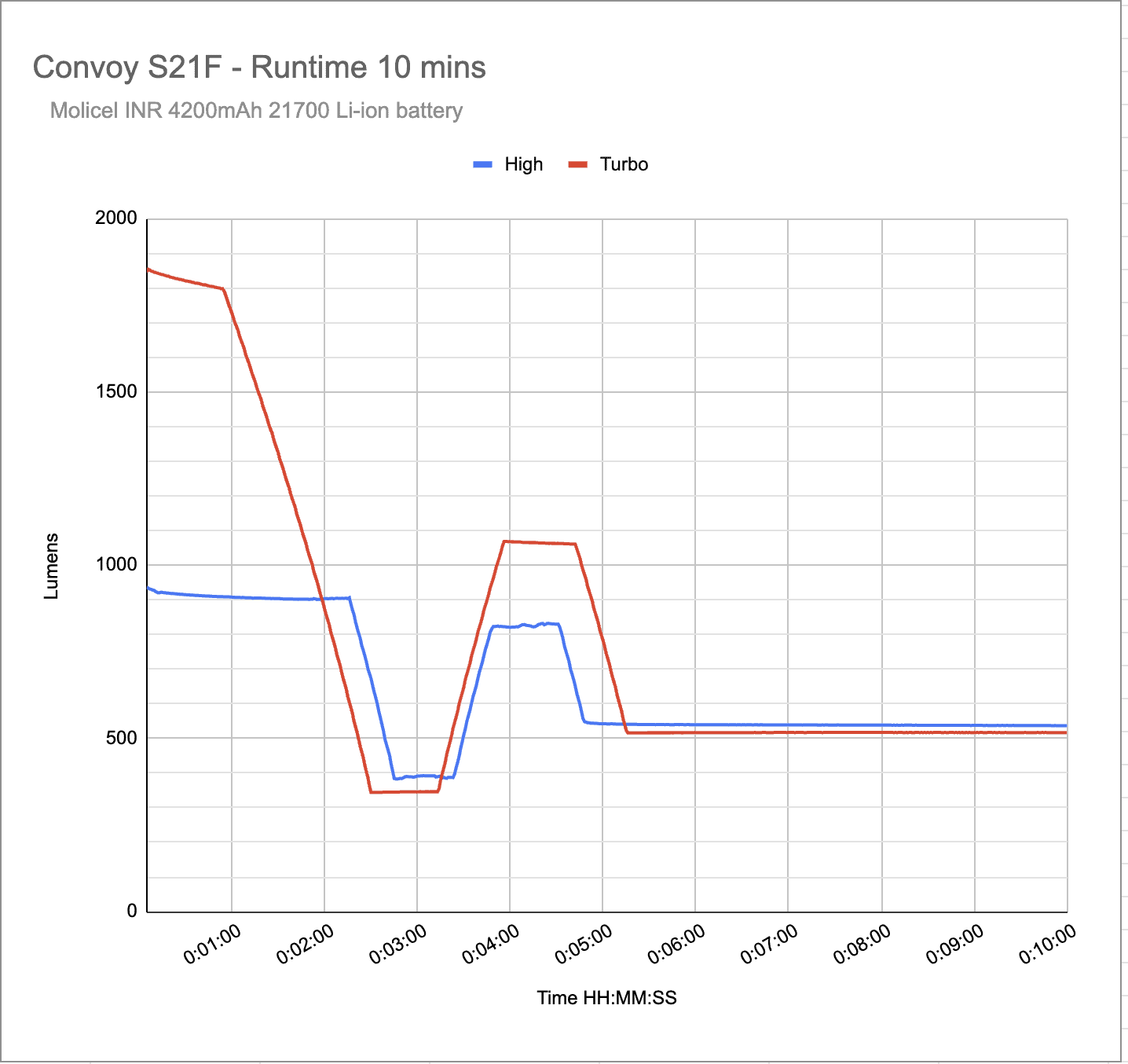
| Mode | Specified | Measured runtime ANSI | Time till shut off |
|---|---|---|---|
| Moon | – | – | – |
| Low | – | – | – |
| High | – | 2h 21min | 2h 21min |
| Turbo | – | 2h 26min | 2h 26min |
About ANSI FL1 standards: The runtime is measured until the light drops to 10% of its initial output (30 seconds after turning on). This does not mean that the flashlight is not usable anymore. The last column shows how long the light actually works till it shuts off. If there is a + symbol, it means that the test was stopped at that particular point, but the light was actually still running. This happens on certain occasions, with certain drivers, firmware, or batteries.
Peak beam intensity and beam distance measurements measured at 2.5m with the CeilingBounce app on an Android phone.
| Mode | Specs | Candela measured | Meters | Yards |
|---|---|---|---|---|
| Low | – | 20 | 9m | 10 yd |
| High | – | 1032 | 64m | 70 yd |
| Turbo | – | 1968 cd | 89m | 97 yd |
About peak beam intensity: Peak beam distance according to ANSI FL1 standards: The calculated value of distance in meters at which the flashlight produces a light intensity of 0.25 lux. (0.25 lux is about the brightness of a full moon shining on an object). The columns ‘Meters’ and ‘Yards’ use rounded numbers.
Beamshots
Camera settings and distance: 50m using Canon EOS 200D – Canon 18-55mm EFS IS – 2”/F6.3/ISO 400/WB 5200k “Daylight”
Beamshots of the following flashlights compared:
- Convoy S21F – High
- Convoy S21F – Turbo
- Manker E14 II XP-G2 CW
- Astrolux S41 Nichia219
- Convoy T3 14500 High mode
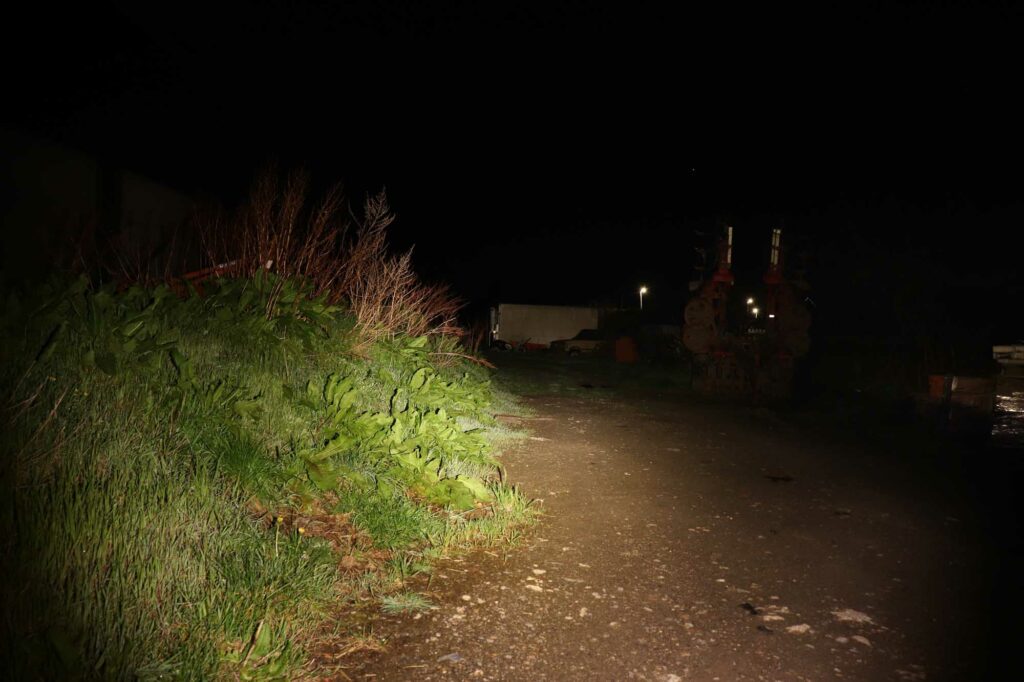
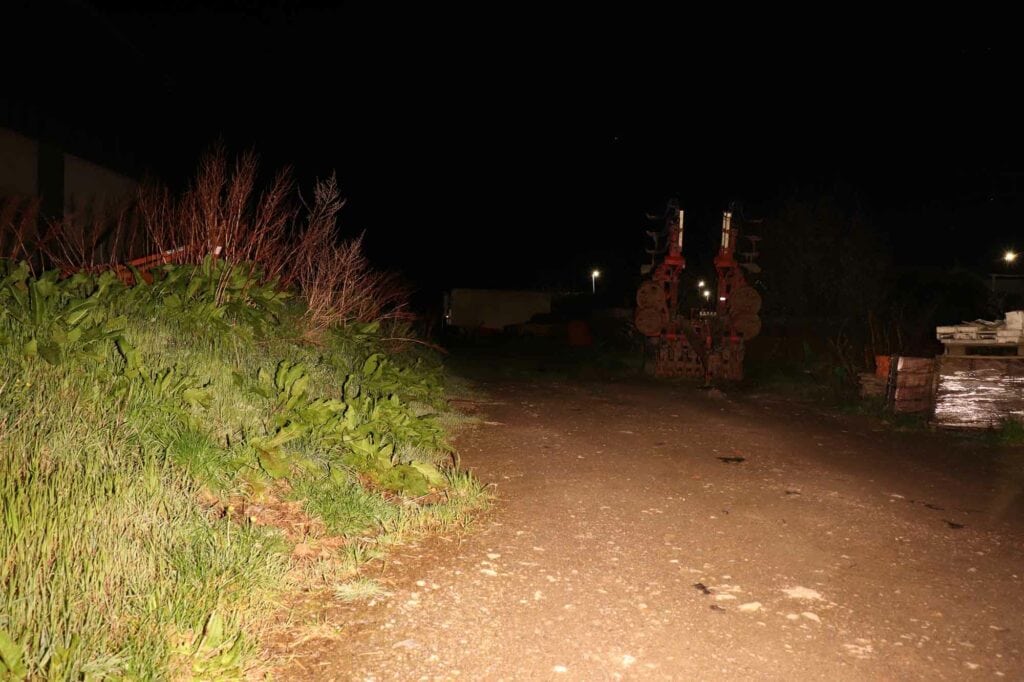
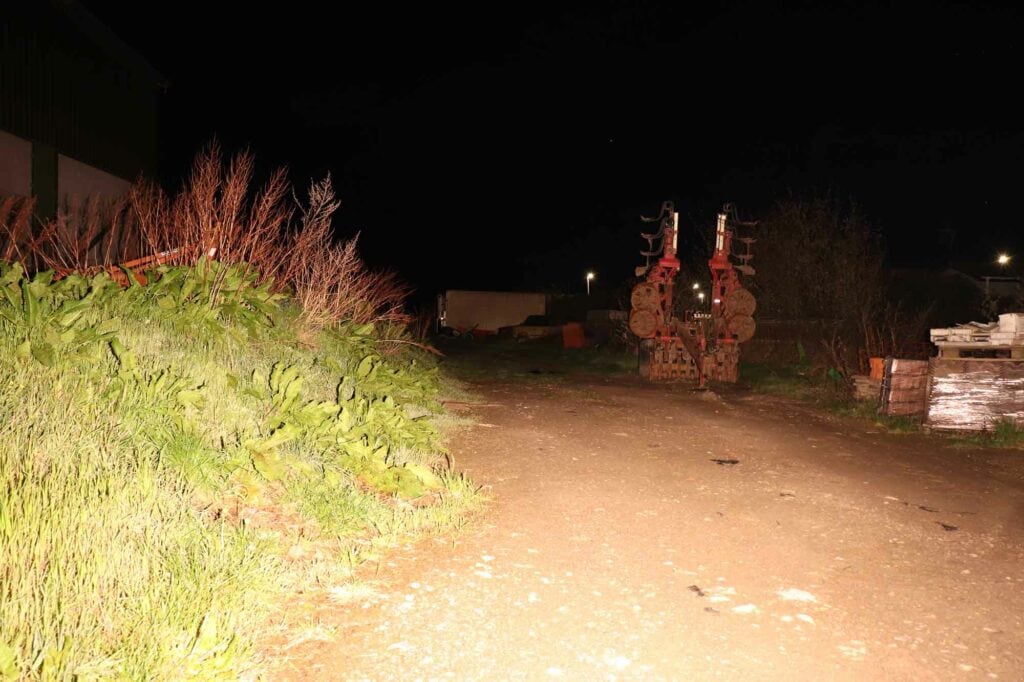
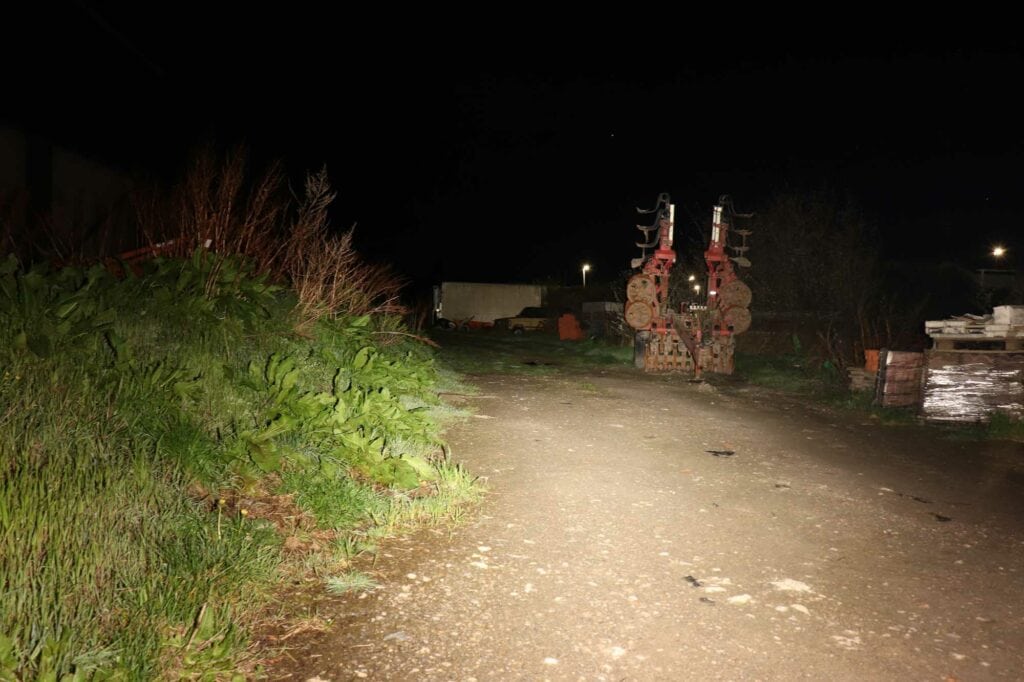
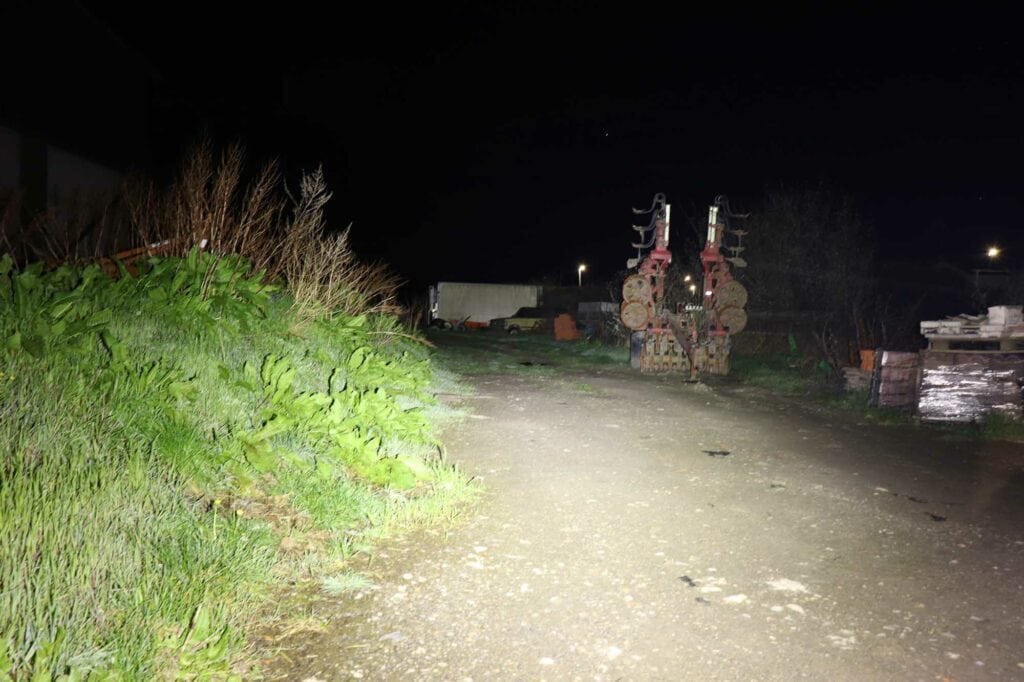
Disclaimer: This flashlight was sent to me for review at no cost by Convoy. I have not been paid to review, nor have I been holding back on problems or defects.
Final Verdict
Pros
- Beam profile
- Novelty factor
- Stable tail standing
Cons
- User interface
- Lack of proper pocket clip
- Novelty factor
Explanation on star ratings:
1: Avoid: a match would be a better choice – 2: Poor: significant defect or issues; almost unusable – 3: Average: some defects or issues; but still usable 4: Good: recommended (minor issues) – 5: Great: highly recommended

3 stars: ★★★
While our star rating provides a reliable indicator, we encourage you to read the full review to make an informed decision based on your own needs and preferences.
While fundamentally there is nothing horrifically wrong with the Convoy S21F, I don’t feel it is one of Convoy’s stronger offerings. The User Interface is quite a big deal breaker for me and although it would only take some little tweaks to solve the issues I have with it, in its current state it does detract from the light in quite a major way.
The party trick of the tint blending is interesting and one every flashlight enthusiast should sample at some point, although it has left me with the conclusion that while it sounds like it should be fabulous and versatile, it seems to offer no benefits over just buying the tint you want in the first place. And has a number of downsides such as a beam that looks less natural and some output modes that totally ignore your selected tint blend anyway. All of this results in me scoring the S21F as 3 out of 5 stars.
“One for the flashaholic collectors wanting a unique flashlight”
Buy your Convoy S21F here
1lumen selects and reviews products personally. We may earn affiliate commissions through our links, which help support our testing.